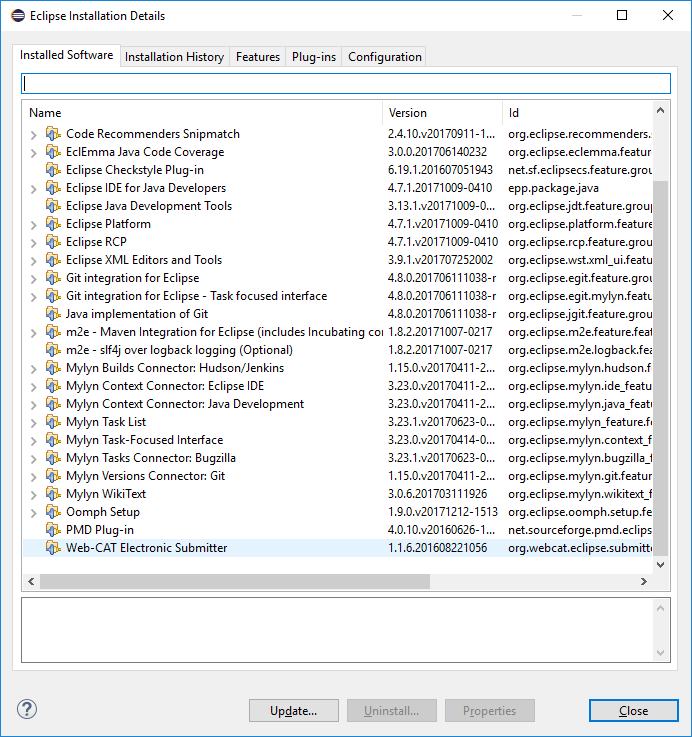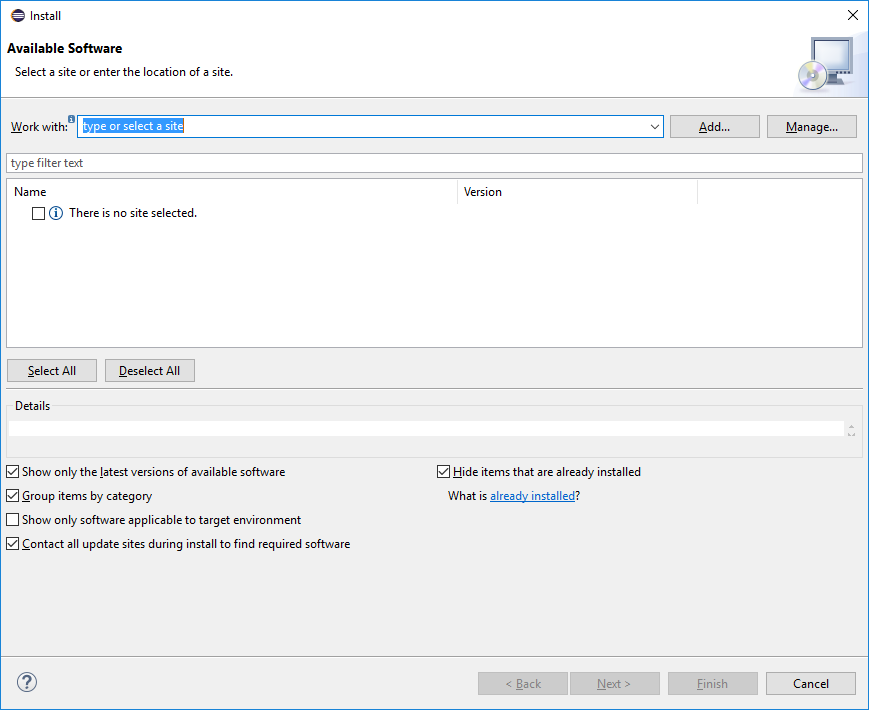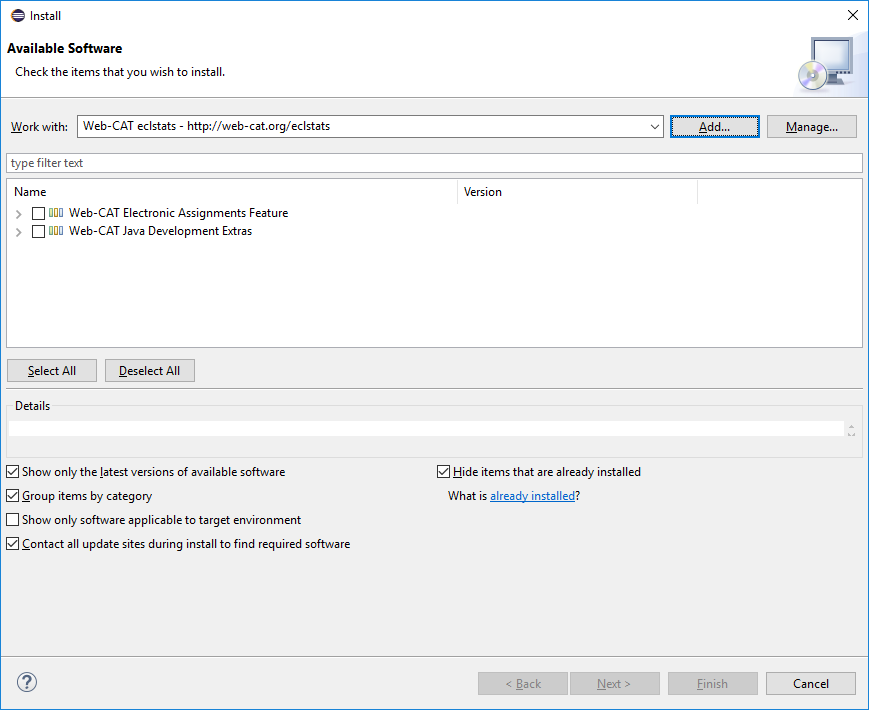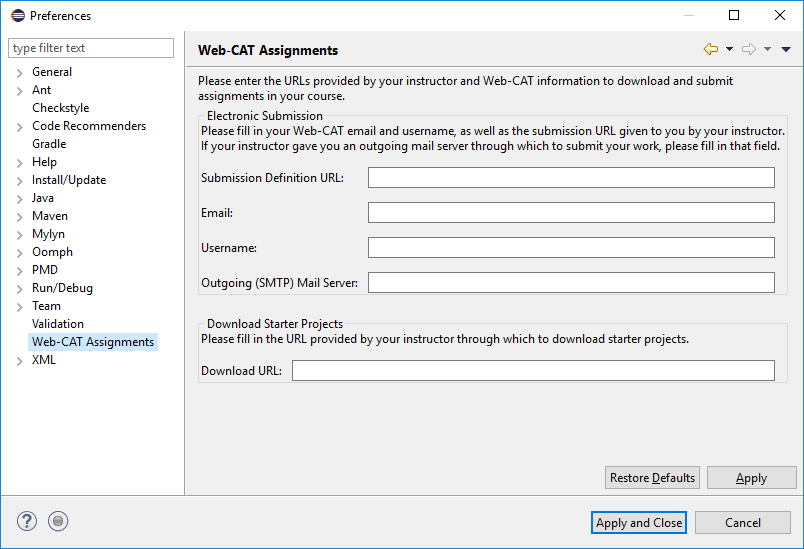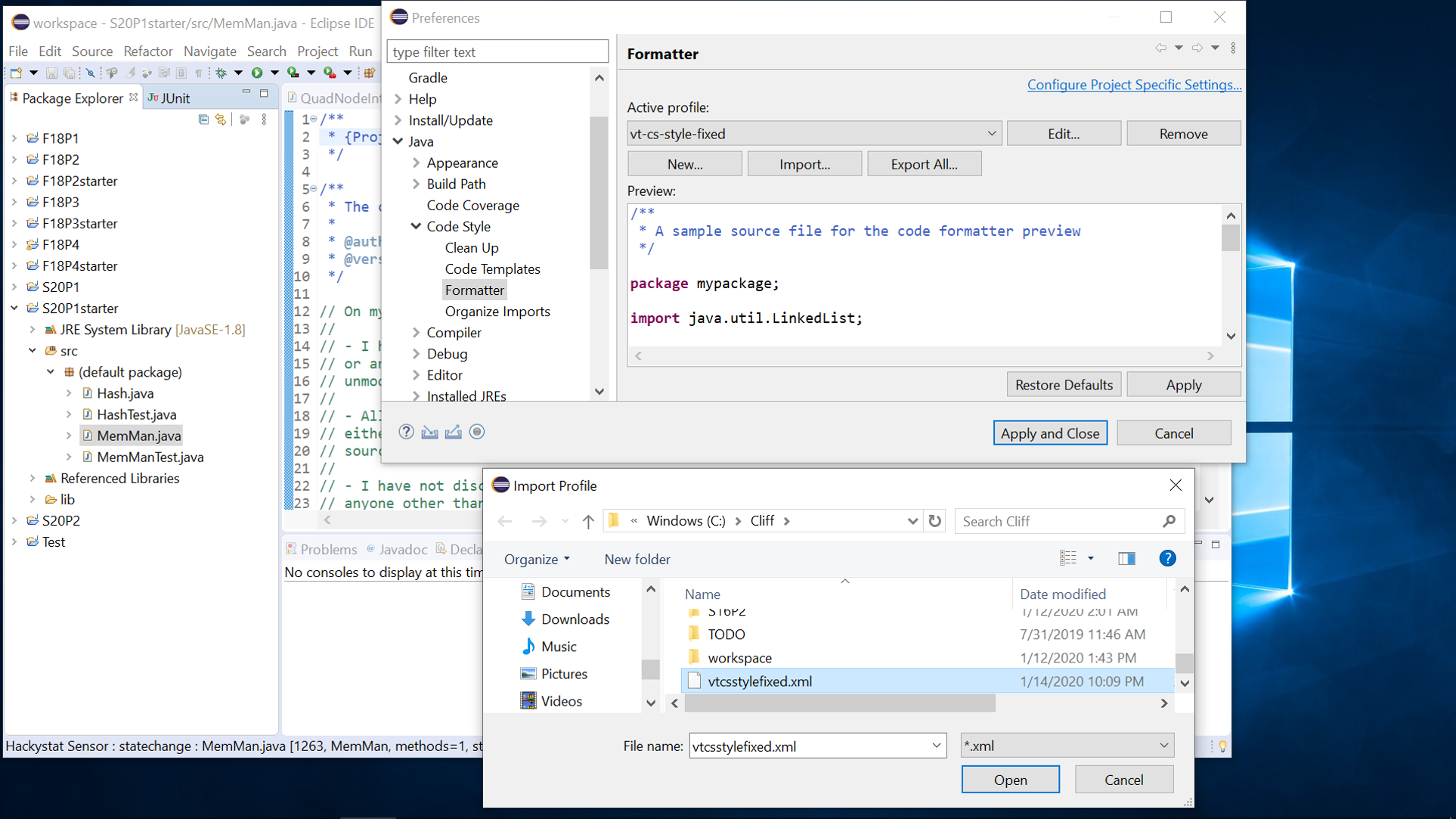2.4. Installing the Web-CAT Submission Plug-in for Eclipse¶
2.4.1. Introduction¶
Here are instructions for how to install the Web-CAT submission plug-in for Eclipse. These instructions assume that you are running Eclipse versions Oxygen or Photon.
Note: This might be a good time to also update Eclipse.
If you are running a version earlier than Oxygen, then you should
install the latest version directly.
If you are running Oxygen or Photon already, then you can check for
updates at Help --> Check for Updates.
2.4.2. Installing the Plug-in¶
2.4.2.1. Un-Installing an Old Plug-in¶
If you already have an earlier version of the Web-CAT plug-in installed, you will first need to uninstall it. For those installing it for the first time, skip to the section on Installing the Plug-In.
Open Eclipse, and in the tool bar at the top of the screen, go to
Help --> About Eclipse. Then click on the button that says
Installation Details.
After clicking on Installation Details,
a window something like this should come up:
Select Web-CAT Electronic Submitter and click Uninstall.
Follow the prompts, clicking Next and Finish as appropriate,
and restart Eclipse to complete the process.
2.4.2.2. Installing the Plug-in¶
Open Eclipse, and in the tool bar at the top of the screen, go to
Help --> Install New Software.
The following window will come up:
In the Work With text box, paste this link:
http://web-cat.org/eclstats
Next, click
Add. A dialog box will pop up with two text boxes.Make sure the above URL is in the box labeled
Location, and put in a sensible name (like “Web-CAT plugin”) in the box labeledName.Once that’s done, click
Add.
This is what the window should look like now:
Check the two boxes next to
Web-CAT Electronic Assignments FeatureandWeb-CAT Java Development Extras, and clickNext.It will then tell you about files that it plans to install. Click
Nextagain.Click
Nextagain.Accept the terms of the license agreement, and click ‘Finish’.
The install will start now.
It will only take a few seconds, but it will pause for a moment and
warn you that you are about to install software with unsigned
content.
Click OK to continue the installation, and restart Eclipse
when prompted to complete the process.
Once you have the plug-in installed, you need to set it up to be able to communicate with Web-CAT:
Go to
Window --> Preferences(Eclipse --> Preferenceson Mac).In the window that comes up, in the column on the left, click on Web-CAT Assignments. You should see this window:
Put in the following information:
Submission Definition URL: https://web-cat.cs.vt.edu/Web-CAT/WebObjects/Web-CAT.woa/wa/assignments/eclipse?institution=VT
Email: Your VT email address (PID@vt.edu).
Username: Your PID.
You can leave Outgoing SMTP Mail Server blank.
In the
Download URLfield, enter: http://web-cat.cs.vt.edu/Web-CAT/assignments.xmlClick on
Apply and Closeto complete the process.
2.4.3. Installing student.jar¶
If you are using Web-CAT, then you probably will want to use the VT
local support for JUnit tests.
See here for how to download the student.jar file and
some practical advice for getting started with JUnit testing.
At the time of this writing, the prefered version of JUnit to use is
Junit 4.
2.4.4. Installing formatting support¶
You might want to make sure that your Eclipse style checker is as close as possible to the style guide that Web-CAT is enforcing. Download this file: vtcsstylefixed.xml (Right click and Save-As). Then install it into Eclipse, as described below.
Once it is installed, press CTRL-SHIFT-F (Windows) or COMMAND-SHIFT-F (Mac) within Eclipse to format your code.
To install:
Mac:
Eclipse->Preferences->Java->Code Style->Formatter->import
the above file, then click okay.
Windows:
Window->Preferences->Java->Code Style->Formatter->import the above file,
then click okay.


